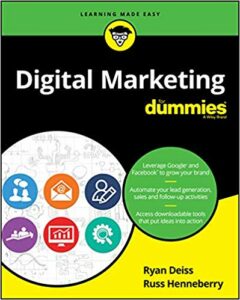
This week, at the start of a new blogging year, I’m looking through my bookshelves at all the business writing-related books I’ve collected over the year 2019. What would I do without these “reading around” gems with their different sorts and shapes of advice and reflection?….
The audience is the hero.
“You are not the hero who will save the audience; the audience is the hero,” Nancy Duarte advises public speakers in the book Resonate. Audience insights and “resonance” can occur only when a presenter takes a stance of humility, the author and coach explains, placing the audience in the center of a story, so it becomes meaningful to them..
Since one important function of any marketing blog is converting lookers to buyers, and since I train Indianapolis blog content writers, this concept of resonance really piqued my interest. When readers arrive at your business blog, it’s because they already have an interest in your topic and are ready to receive the information, the services, and the products you have to offer. However, the focus of each blog post must be on the end results from the readers’ point of view. Help readers know how good they’ll feel in terms of security, savings, recognition, or basic need fulfillment – make them the heroes.
Don’t get steaming mad.
Blowing off steam may seem like a good idea for heart health, explains Mandy Oaklander in a special Time Magazine edition on living longer, but angry outbursts have been proven to result in increased heart risks.
In the real world, many blog content writers focus on appealing to consumers’ fear or greed, making them “angry enough” to take action. At Say It For You, our approach has been that blogging for business is just one aspect of any company’s overall marketing strategy. The entire tone of the blog, therefore, needs to be consistent with the kind of positive image the company wants to project. Can and should a single blog post appeal to customers’ anger about the poor service, shoddy workmanship, or exorbitant charges they’ve experienced in the past? Definitely! Overall, though, a positive slant will win the day.
What we measure, we can improve.
Improvement in anything happens not all at once, but over time, Michael Hill explains in Measuring Ourselves. When Benjamin Franklin decided he wanted to become proficient at writing, he found examples of writing clearly superior to his own, then would do writing – and rewriting – daily, measuring himself against both others and against his own earlier efforts.
As a corporate blogging trainer and content writer, I find that it’s not always possible to associate a specific ROI measurement to blogging without regard to social media, traditional advertising, events, word of mouth marketing, and sales. Yet, what we’ve learned through working with Say It For You clients, is that the very process of continuously producing and making available quality content (either content they write themselves or content they co-author through interaction with a content writer) helps demonstrate that they care about effectively expressing to customers and colleagues their unique “slant” on their industry.
Writers, as the new year begins, make – and keep – the perfect New Year’s resolution: “Read around” to find gems like these and then – share those gems with your readers in the form of improved blog content!











Follow us online!